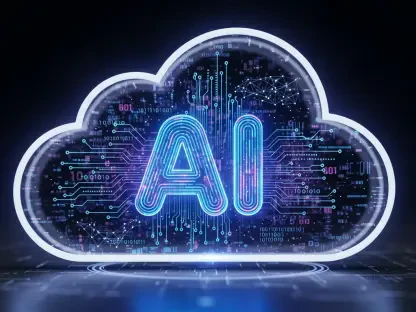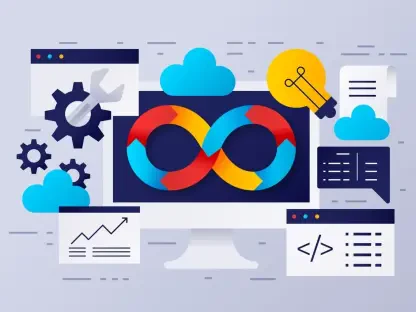The current wave of technological advancements, especially in artificial intelligence, has brought open source generative AI to the forefront of innovation across various sectors. This technology is redefining traditional industry boundaries as institutions and professionals worldwide explore its potential to automate complex tasks, enhance human capabilities, and create new opportunities for collaboration and innovation. Open source generative AI is distinguished by its democratizing ethos, providing access to high-level AI capabilities that were once the exclusive domain of large corporations with significant resources. The rise of these technologies is pushing boundaries, altering how industries operate and generate value. By examining key aspects of this rise, we observe profound changes, challenges, and future implications of embracing this technological shift.
The Expanding Horizon of Open Source AI Technologies
Large Language Models and Their Diverse Applications
Large Language Models (LLMs) have fundamentally transformed the way language-based tasks are approached, providing sophisticated solutions for generating and comprehending human language. Open source variants like GPT-2, GPT-Neo, and GPT-J exemplify this transformation. Emerging from the open-source community, these models provide a balance of cost-efficiency and customization potential. The success of LLMs can be attributed to their capacity for generating text, answering questions, and even creating conversational agents capable of engaging in human-like dialogues. In sectors like media and publishing, LLMs streamline content creation by drafting articles and producing summaries with incredible speed and accuracy, challenging traditional methods and offering new efficiencies.
Moreover, these models provide the flexibility needed for niche applications by utilizing custom datasets that reflect specific industry terminology and needs. This adaptability allows them to be used in specialized fields such as legal writing and scientific research, where precision and domain-specific knowledge are crucial. The strength of open source LLMs lies in their collaborative development model, where diverse contributors can refine and improve these tools, ensuring they not only advance technologically but also align with ethical standards through openly shared innovations and best practices.
Visual Language Models: Bridging the Language-Image Divide
Visual Language Models (VLMs) like CLIP and DALL-E represent a powerful convergence of language and image processing capabilities, opening new avenues for creativity in areas as diverse as marketing, entertainment, and even education. Their ability to interpret text inputs and produce corresponding visual outputs allows them to perform tasks such as image captioning and content generation, enhancing the way in which imagery and language are integrated across industries. In marketing, for instance, these models automate the design of customized visual content that aligns with specific brand narratives, driving engagement and enhancing consumer experience.
VLMs also enable a deeper level of interaction and creativity in storytelling, bridging visual and textual elements to create more immersive experiences. This transformative capability is increasingly incorporated into advanced applications, such as virtual and augmented reality environments, offering richer interactive experiences. Open source VLMs provide significant flexibility, allowing developers to adapt and integrate them into various platforms, enhancing accessibility and personalization across digital media landscapes. By facilitating extensive collaboration and sharing, VLMs are continuously being refined to overcome challenges and expand the possibilities of digital content creation.
Strategic Implementation in Key Sectors
Healthcare Advancements through AI
In healthcare, the integration of open source generative AI models is revolutionizing data analysis and decision-making processes. These tools assist in the interpretation of vast amounts of medical data, fostering more informed clinical decisions and supporting personalized treatment strategies. Enhanced capabilities in transcription and language processing improve documentation accuracy, ensuring efficient communication across multilingual settings and streamlining administrative processes. AI-driven analysis supports early diagnosis and the identification of potential health threats by analyzing diverse data types, increasing healthcare efficiency and patient outcomes.
Moreover, AI’s potential to automate routine tasks reduces the burden on medical professionals, allowing them to focus on patient care and treatment innovation. This includes the development of AI-driven diagnostic tools and the integration of machine learning in clinical settings to refine predictive models for disease progression and treatment efficacy, particularly in chronic and rare conditions. The open source approach contributes to the advancement of healthcare by enabling low-cost access to cutting-edge technologies, thereby democratizing the benefits of AI-driven healthcare improvements to a broader population, including underserved communities.
Personalizing Education with AI Innovations
In education, open source generative AI is transforming the learning environment, enabling personalized, adaptive learning experiences that cater to diverse student needs. AI-powered tutoring systems and adaptive learning platforms dynamically adjust curricula based on student performance and engagement, enhancing learning outcomes. Real-time translation services break down language barriers, promoting inclusivity and enabling access to global educational resources. Adaptive AI technologies help educators understand students’ strengths and challenges, allowing a more tailored educational approach that promotes engagement and deeper understanding.
Moreover, generative AI facilitates the creation of interactive and rich educational content, such as digital simulations and gamified learning experiences, that captivate students and augment traditional teaching methods. This technology supports lifelong learning by providing flexible, scalable educational opportunities that bridge formal education and professional upskilling. The open-source nature of these AI tools fosters collaboration among educational institutions and developers, leading to constant innovation and the broadest possible dissemination of effective teaching methodologies and resources.
Addressing Challenges in Open Source Generative AI Development
Tackling Bias and Fairness
Open source generative AI development faces critical challenges, particularly regarding bias and fairness in data-driven models. Identifying and mitigating unintended biases is paramount, as these can perpetuate stereotypes or skew decision-making in crucial applications like hiring or lending. Implementing well-structured bias detection frameworks is necessary to ensure AI models represent diverse perspectives and yield fair outcomes across different demographic groups. Adopting inclusive datasets during model training is essential to counter bias and enhance the reliability and ethics of AI systems.
Diversity in the data used to train these AI systems creates more equitable models. Additionally, engaging interdisciplinary teams in model development encourages varied inputs, promoting fairness and reducing bias risk. Ongoing dialogue and transparent practices foster trust and acceptability in AI applications, vital for public confidence and acceptance. The open source community plays a critical role in maintaining this collective responsibility by providing platforms for sharing insights, best practices, and improvement suggestions, ensuring ethical standards are observed and advanced continually.
Security and Misuse Concerns
The open availability of these models presents unique security risks and potential misuse, including the generation of malicious content like deepfakes or misinformation. Addressing these concerns requires a multi-faceted approach, focusing on developing robust ethical guidelines and implementing AI watermarking techniques to trace misuse while ensuring model integrity and reliability. Establishing industry-wide standards and encouraging transparency in AI development can mitigate threats and build secure platforms for the technology’s advancement.
Furthermore, ethical AI use mandates proactive monitoring and accountability frameworks, including regulatory oversight and community-driven initiatives to report, assess, and address misuse cases. Strong security protocols, regular audits, and cross-sector collaboration contribute to establishing safe AI deployment practices. Building international coalitions and engaging policymakers ensures that regulations are practical, comprehensive, and aligned with technological advancements. These measures help maintain public trust in AI applications, ensuring a secure and responsible growth trajectory for open source generative AI technologies.
Pioneering a New Era with Open Source AI
The journey toward fully harnessing open source generative AI is marked by promises and challenges alike, necessitating continued innovation and concerted efforts to ensure its ethical and responsible evolution. Moving forward, the future of open source generative AI will be characterized by increased collaboration across disciplines, aiming to foster an innovative and inclusive ecosystem. Addressing challenges related to fairness, security, and sustainability remains critical as these technologies mature and find wider applications.
Implementing robust governance frameworks and investing in energy-efficient AI research will ensure sustainable progress, protecting the environment while providing opportunities for SMEs to participate in the AI revolution. Additionally, continued development of synthetic data and advanced data curation techniques will improve training processes, enhancing AI model performance while minimizing bias. As open source generative AI continues to evolve, it has the potential to transform global industries, creating new opportunities for growth and innovation while promoting equitable access to resources and knowledge.








